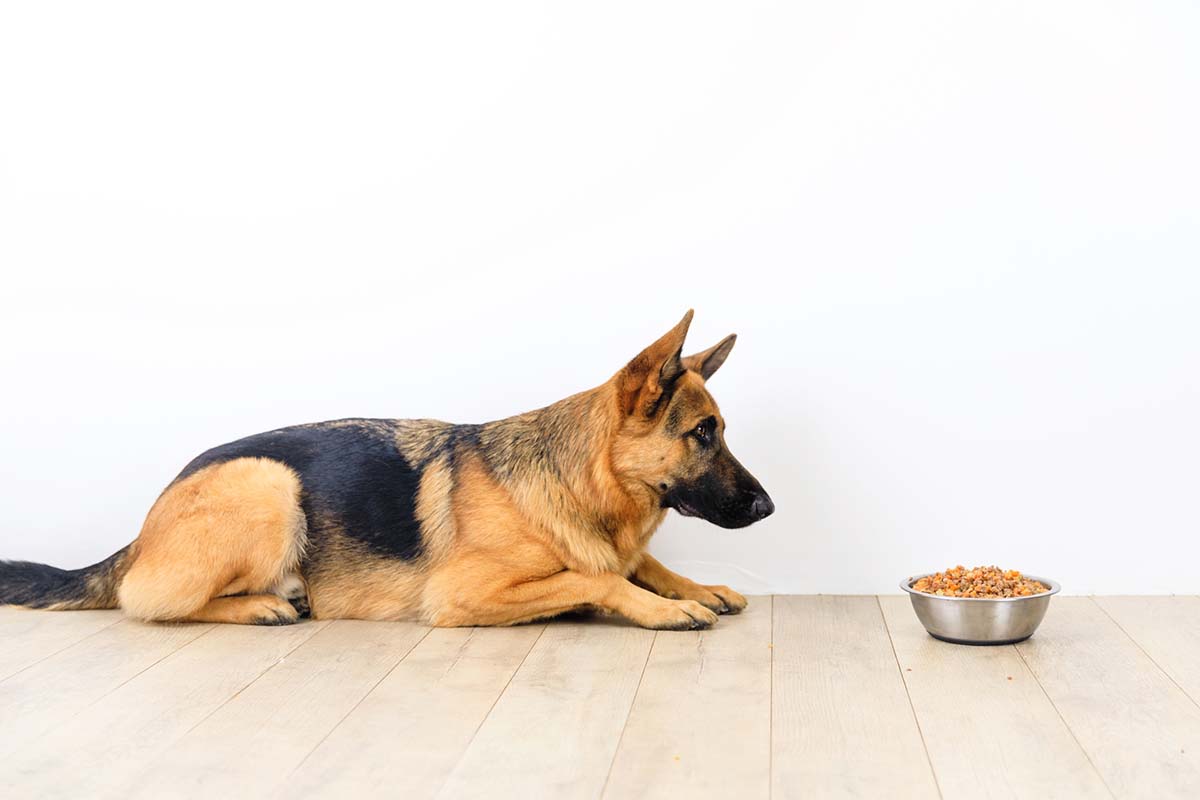There are two types of dogs when it comes to mealtime. Some dogs will eat almost anything you put in front of them. On the flip side, some dogs may turn their nose up at their food bowl. If your dog is the latter type, you may be wondering “Why is my dog a picky eater? How do I make my dog’s food more appealing?”
There are many reasons why a dog might become a picky eater. It’s important to first understand the cause in order to find the best solution.
7 Reasons Why Your Dog Is a Picky Eater
There are a handful of reasons why your dog isn’t digging their food. Whether they simply have picky eating habits, are going through an unknown health problem, or find their new prescription food less palatable than their old food, it’s important to learn the root cause in order to get their eating behaviors to change.
Here are some of the most common reasons why dogs become picky eaters.
1. Medical problems
Certain medical conditions can cause dogs to lose their appetite or become picky eaters. They include:
- dental problems
- allergies
- food sensitivities
- digestive issues
- cancer
- liver problems
- kidney disease
- infection
If you’re concerned that your dog’s picky eating might be caused by a health condition, take them to the vet for a checkup.
2. Medications
Some medications can cause an upset stomach or a change in appetite. Pet parents should check the side effects of any medications their pup may be on and check in with their veterinarian. They may recommend your dog take the medication with probiotics to support its gut health and immune system.
3. Stress or anxiety
Stress and anxiety can also cause dogs to lose their appetite or become picky eaters. Common stressors for dogs include changes in routine, new people or pets in the home, and loud noises. If you think your dog might be stressed or anxious, try to identify the source of the stress and take steps to reduce it.
4. Type of food
If your pooch is on new food or prescription food, they may not like the taste or smell. There are a few strategies pet owners can try to get their pups interested in the new kibble at feeding time (see below).
5. Age
Eating less food is a common sign of aging in dogs. Senior dogs don’t need as much food since they generally expend less energy than they used to. If your dog’s teeth or gums are sore, the hard texture of dry dog food could be causing pain.
6. Change in routine
If you’re constantly switching your dog’s kibble or giving them too many treats and table scraps, it can make them picky eaters. Dogs like routine. They’re more likely to eat their food if they know what to expect with a feeding schedule. You’ll need to regulate your adult dog’s appetite by feeding them the same food at the same times each day and limiting the number of dog treats they get.
7. Food preference
Just like people, dogs have different food preferences. Some dogs prefer dry food, while others prefer wet food or fresh dog food. Some dogs like certain flavors or textures, while others don’t. It may take some experimentation to find a pet food diet that your fussy eater loves.
Tips for dealing with a picky eater

If you have talked to a DVM and can rule out any health issues or underlying medical conditions, there are some tried and true ways to get your dog to eat their own food.
Here are some tips for dealing with a picky eater that is otherwise a healthy dog:
- Stick to a routine. Feed your dog at the same times each day and take away their food after 30 minutes, even if they haven’t eaten everything. This will help them learn that they need to eat when their food is served.
- Try a food topper. For your dog’s next meal, try offering them a variety of different toppers to see what they like. You can try a spoonful of different brands, flavors, and textures.
- Add warm water or bone broth to dry food. If your dog prefers wet food, you can add warm water or chicken broth to their dry food to make it more moist. Mimicking wet dog food can help make your dog’s meals more flavorful.
- A pump of fish oil: Your dog needs an omega-3 fatty acid source! Mix a pump of fish or algae oil with your dog’s dry kibble for added palatability and health benefits.
- Mix in healthy human food. If you’re struggling to get your dog to eat, you can try mixing in some dog-safe human food in your dog’s bowl. Plain, boiled chicken breast, and veggies like broccoli, sweet potatoes, banana, blueberries, carrots, green beans, and apples are all great mix-in options. Just be careful not to overdo it.
- Top with human-grade dog food: Adding a little fresh food with your dog’s dry food is a great cost-effective way to get them to eat and reap the benefits of human-grade nutrition.
Talk to Your Vet
Dog owners concerned about their dog’s picky eating should talk to their vet. They can help you determine the cause of the problem. Then, they will recommend the best course of action for your picky dog’s diet moving forward.
This content is for informational use only and does not replace professional nutrition and/or medical advice, diagnosis, or treatment. It is not a substitute for and should not be relied upon for specific nutrition and/or medical recommendations. Please talk with your veterinarian about any questions or concerns.
